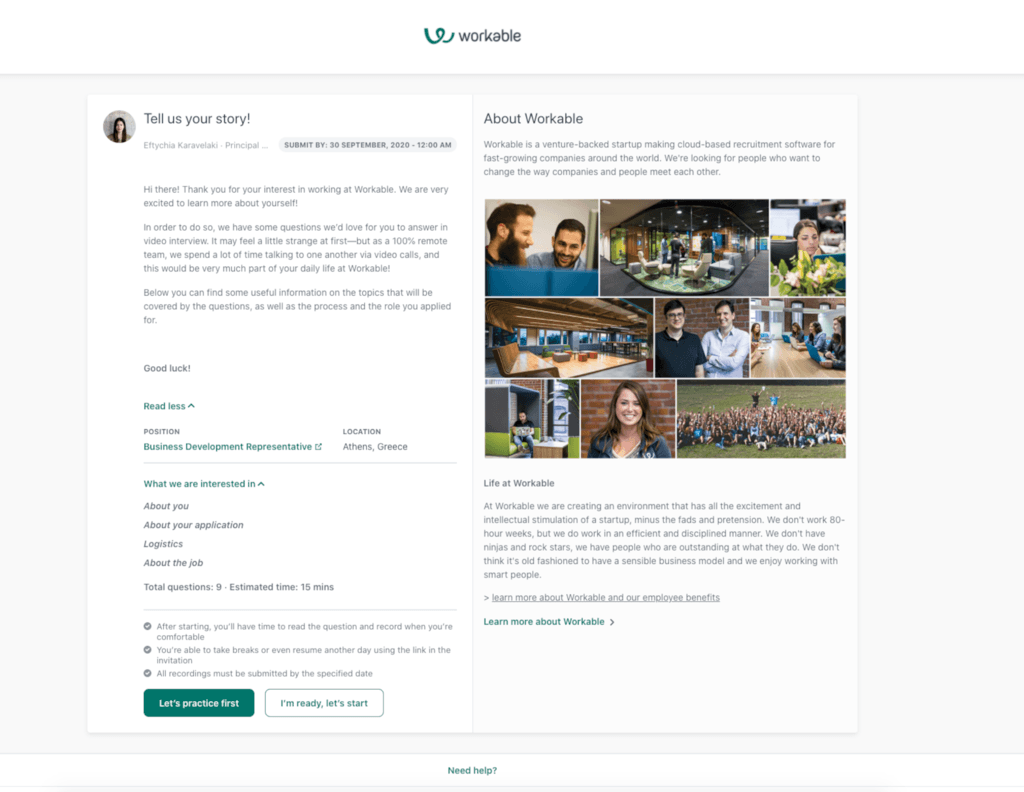“testRTC had almost everything that we needed. The solution is easy to use, easy to integrate and it was easy to include in our CI environment.”
Eleni Karakizi, Senior QA Engineer at Workable
HR is one of the business functions that are getting a digital transformation makeover. Workable is a leading vendor in this market, helping businesses make the right hires, faster with their talent acquisition software. A part of that enablement is Workable’s video interviews product which makes use of WebRTC.

WebRTC test automation via testRTC
Workable has video interviews implemented as a feature of a much larger service. The teams at Workable believe in test automation and are shying away from manual testing as much as possible.
When they started off with the implementation of their video interviews feature they immediately searched for a WebRTC test automation solution. They found out that WebRTC implementations are complicated systems. Developers needed to handle changing and unpredictable network environments. WebRTC brought with it a lot of moving parts. Using testRTC meant reducing a lot of the development efforts involved in setting up effective test automation for their environment.

Workable immediately created a set of tests and made them a part of their continuous integration processes, running as part of their nightly regression testing. This enabled Workable to find any regression issues quickly and effectively before they got to the hands of their users and without the need to invest expensive manual testing time.
At Workable, testRTC is accessed by developers and QA engineers who work on the video interviews platform to create tests, run them and analyze the results.
The testRTC experience
What Workable found in testRTC was an easy to use service.
Test scripts in testRTC are written using Nightwatch, a widely used open source scripting framework for browser automation. Since a lot of the code developed with WebRTC is written with JavaScript, being able to write test automation with the same language using Nightwatch meant there was no barrier in the learning curve of adopting testRTC.
The APIs used for the purpose of continuous integration were easy enough to pick up, making the integration process itself a breeze.

An important aspect of the testing conducted by Workable was the ability to configure and test various network conditions. The availability and ease of picking up different network profiles with testRTC made this possible.

